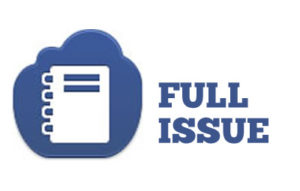 NEWS: Legislators eye education fixes after shaky student snapshots
NEWS: Legislators eye education fixes after shaky student snapshots
BRIEFS: Hurricane? What hurricane? Here’s some non-hurricane news items
CALENDAR: Conformity returns, school report cards and opioid response
COMMENTARY, Brack: Be thankful for South Carolina’s public servants
SPOTLIGHT: Charter Communications
FEEDBACK: Several readers respond to analysis on Southern strategy
MYSTERY PHOTO: What’s missing … and why?
S.C. ENCYCLOPEDIA: Hurricanes
NEWS: Legislators eye education fixes after shaky student snapshots

By Lindsay Street, Statehouse correspondent | The annual snapshot of South Carolina’s public school students shows a majority is not meeting grade-level expectations in math or English language arts.
With nearly one in four students struggling in those subject areas, an education policy discussion is boiling in the state.
“It will take support and involvement of parents and community leaders and a culture shift in our state if we are to see progress,” Education Oversight Committee Chairman Neil C. Robinson Jr. said in a statement about the results.
State Superintendent Molly Spearman also released a statement on the need for change:
“We are still falling short of the benchmarks set to ensure our young learners are prepared and on track,” she said.
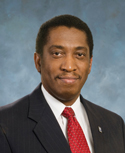
At least one Democratic House member plans to push for better efforts in attracting and retaining quality teachers as well as reducing class sizes — efforts that would cost the state millions.
“We need to reevaluate,” S.C. Rep. Jerry Govan, D-Orangeburg, told Statehouse Report.
Now, however, the renewed policy focus is broader than in the past, attracting bipartisan attention, particularly when it comes to what some lawmakers see as “testing fatigue” and whether the assessments are leading to real improvements in the classroom.
“We’ve overloaded our teachers and districts with testing,” said Sen. Rex Rice, R-Pickens.
The snapshot
One-third of South Carolina’s students in fifth and seventh grade students are not meeting grade expectations in social studies. The trend appears to be worsening over the last few years, according to the report released by the S.C. Department of Education. More than one-third of sixth grade students are not meeting expectations in science.
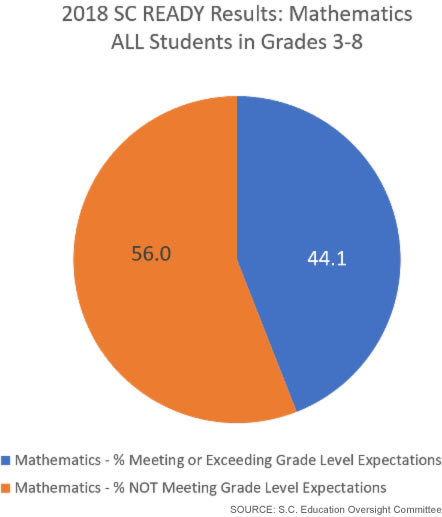 Across all grades, more students met or exceeded grade-level expectations in mathematics from 2017 to 2018, with the greatest increase occurring at the fifth grade. Similarly, in English language arts (ELA), at all grade levels except grade 8, there was a greater percentage of students who met or exceeded grade-level expectations.
Across all grades, more students met or exceeded grade-level expectations in mathematics from 2017 to 2018, with the greatest increase occurring at the fifth grade. Similarly, in English language arts (ELA), at all grade levels except grade 8, there was a greater percentage of students who met or exceeded grade-level expectations.
Overall, across all grades, 41 percent of students were prepared or well-prepared for the next grade level in ELA. And 44 percent were prepared or well-prepared for the next grade level in mathematics.
However, that still leaves a majority of students unprepared.
In 2018, 59 percent of students overall needed additional academic support or substantial academic support to be prepared for the next grade level in English language arts. In mathematics, 56 percent of students needed more help to be ready for the next grade level.
Across all grades, about more than a quarter of students were in need of substantial academic support in ELA and mathematics in 2017-2018.
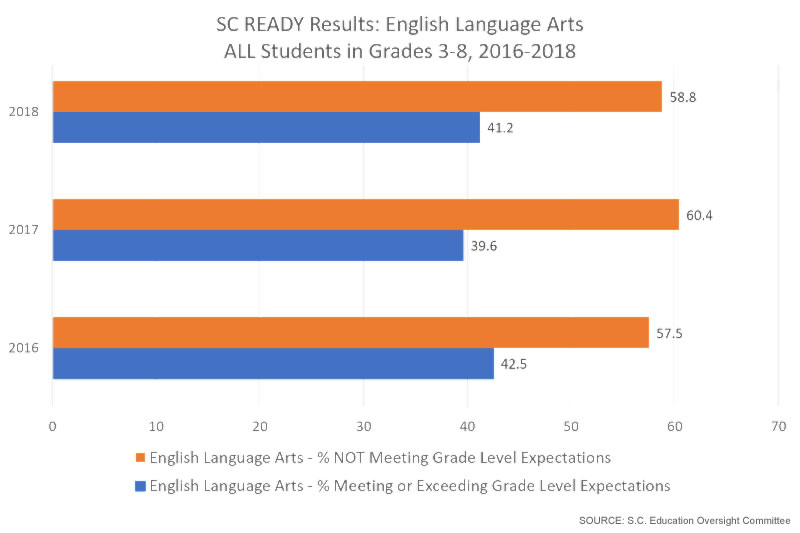
How to move forward
Spearman pledged to work “hand-in-hand” with state teachers to ensure access to tools and resources to help prepare students. Spearman’s office was asked to clarify what concrete steps should be taken to achieve her department’s goals on Monday morning, but, in a response issued more than 24 hours later, spokesman Ryan Brown said the offices were closed due to Hurricane Florence.
[Editor’s note: On Sept. 15, Brown said it was inaccurate for Statehouse Report to say the agency’s lack of a response was due to the office’s closure: “Our lack of response to the subject in question was due to agency preparations and response to Hurricane Florence.” On Sept. 11, however, Brown responded to a Statehouse Report inquiry with this statement: “We are dealing with Hurricane and 430,000 students being out of school and many being evacuated so it will be later this week/next week before I can get you a response. Our offices are closed per Governor executive order.”]
EOC Executive Director Melanie Barton, who was available despite state offices being closed, said the department could figure bigger than the legislature in shoring up education in the state.
“The legislature has a very limited role in actually affecting assessment results at the school level,” Barton told Statehouse Report. “Getting to the detail of what teachers need and the supports that they need, that’s more of a responsibility of the department and school districts working together to find out what they need.”
But state education policy analyst Michelle Exstrom of Denver and others say there are statewide policies that can help.
“Most states are taking a good hard look,” Exstrom said. She is the head of education at the National Conference of State Legislatures, which took up the issue of assessment and accountability in a bootcamp recently. Govan attended the bootcamp. “We have some governance barriers; we have structural barriers.”
Exstrom and others see several critical areas to help improve systems: attracting, preparing and continuing the education of quality teachers; keeping classroom sizes small; keeping high standards; and early interventions.
More quality teachers needed
Like other states, South Carolina’s teacher shortage is working against student success, Exstrom said. Teachers are not graduating at the top of their class, they are not being adequately prepared before entering the classroom, and they are not educated throughout their career.
Exstrom said the best education systems in the world prioritize teacher preparation, pay and continuing education. In South Carolina, Govan, Barton and others also said having more quality teachers will help keep students on grade level.
“We need to have our brightest and our best in the classroom,” Govan said. “We need to dig down beneath the layers and ask the question of why we’re having a shortage of teachers and why we have a loss of interest in the teaching profession and what we can do to address it.”
Barton listed quality teachers as a “big one” impacting student performance.
“That is the number one policy area that needs to be addressed,” she said, adding she predicts the General Assembly will take a hard look at this issue beginning in January.
“Test mania”
Paying for quality teachers could prove to be a big hurdle in the state. But a growing group of bipartisan state senators is trying to tie teacher pay with paring down testing requirements in the state.

South Carolina has upped its game in assessing students, but assessing is not improving, according to Fanning.
“We’re spending tens of millions of dollars on these tests,” said S.C. Sen. Mike Fanning, D-Fairfield, in a telephone interview. “This test mania is not helping us get anywhere. (It’s) additional data upon additional data without accomplishing anything.”
Fanning has filed two bills in two years seeking to cut required testing assessments in the state, believing they are a distraction for teachers and students, and do nothing to prepare students for college or the workforce.
“Tests should not drive curriculum. The teaching and learning should be the importance,” the former high school teacher said.
Though the two previous bills went nowhere, Fanning’s gaining support from some Republicans, like fellow Education Committee member Sen. Rex Rice, R-Pickens.
Fanning said state lawmakers have stopped listening to teachers on the issue, but now many parents are starting to rattle sabers about perceived over-testing and “testing fatigue.” He said “needless” assessments that take a month away from classroom time.
“We can’t let the tail wag the dog. At some point we have to say what are we doing too much of that we could do less of,” Fanning said.
Barton countered Fanning’s argument. Most of South Carolina’s required testing is either federally mandated or comes from the district, school or teacher’s own assessments, she said. The EOC looked at testing in 2015.
“In federal law there are minimum requirements, where we go over is we test in social studies once in elementary and in middle schools,” Barton said. “That is a decision South Carolina has made … (and) we have gotten praise from other entities in our (federal compliance) plan because we do that and have a holistic approach.”
- Have a comment? Send to: feedback@statehousereport.com
NEWS BRIEFS
BRIEFS: Hurricane? What hurricane? Here’s some non-hurricane news items
![]()
By Lindsay Street, Statehouse correspondent | Today is the day.
Not just for Hurricane Florence but also for a public comment period to open on South Carolina’s Medicaid waiver, which would allow the state to end federal and state dollars toward abortion providers for non-abortion services.
Acting under an executive order from Gov. Henry McMaster, the S.C. Department of Health and Human Services is seeking to allow the department to exclude certain providers based on transforming its Medicaid model to “preconception care,” meaning providers need to offer a “whole-health” approach more like a primary-care physician, according to DHHS Director Joshua Baker, who spoke with Statehouse Report in April.
The public comment period ends Oct. 7.
No other state has successfully used such a policy change to block Medicaid money from reimbursing beneficiaries who use clinics that also provide abortions, according to Baker. Public money cannot be spent on abortions under federal law, but clinics that provide other services are not stopped from receiving Medicaid reimbursements in South Carolina as of right now.
Of the three abortion providers in the state, only Planned Parenthood of South Atlantic’s Columbia location is enrolled in the S.C. Medicaid program, according to DHHS.
What else isn’t hurricane related? Well, how about:
Electronic voting under fire. Neighboring and fellow electronic-only voting state Georgia could have to return to paper ballots before the November election, depending on how a federal judge rules. Early voting begins Oct. 15 so an order changing the election system would likely prove difficult for the state to comply, according to those in the state. But election security advocates say it is worth the effort to ensure votes are tallied correctly.
New school resource officers. The S.C. Department of Education is putting $2 million of taxpayer money to work by funding school resource officers in 38 school districts. The proviso funding the resource officers is aimed at making schools safer in the wake of mass shootings. More than 60 school districts applied for the money, and the department says it selected the districts based on its taxpayers’ ability to pay. The usual suspects were among those awarded money: Abbeville, Allendale, Marlboro, McCormick, Clarendon and Jasper (among many). But there were some growing school districts that made the list: All three Spartanburg districts and York 1. See the full list of school districts here.
Low sales tax per capita. South Carolina is at the bottom of another list, but if you don’t like sales tax, then this is a good bottom list to be at the bottom of. The state ranks 38th in the amount of sales tax it receives per capita, according to a report from the Tax Foundation. The state brings in an average of $659 per person in sales tax every year. Read more here.
- NEED MORE FLORENCE? If you are still jonesing for more hurricane coverage, you may want to subscribe to S.C. Clips to see all the stories around the state.
CALENDAR: Conformity returns, school report cards and opioid response
![]() By Lindsay Street, Statehouse correspondent | The Senate subcommittee tasked with hashing out how the state should align its tax code while avoiding raising taxes will meet 1 p.m. Sept. 18 in room 105 of the Gressette building.
By Lindsay Street, Statehouse correspondent | The Senate subcommittee tasked with hashing out how the state should align its tax code while avoiding raising taxes will meet 1 p.m. Sept. 18 in room 105 of the Gressette building.
Time is crucial as tax experts around the state have said waiting that until January would cause taxpayer compliance issues, which could hit the state’s revenues. According to panel member S.C. Sen. Sean Bennett, R-Dorchester, the subcommittee does not have any plans as of publication to cancel or delay this meeting due to Hurricane Florence.
Also on the calendar:
Education report cards out soon. The annual education report cards are due Nov. 15, according to Education Oversight Committee Executive Director Melanie Barton. The report cards assess the state, schools districts and individual schools. The EOC is scheduled to meet 10 a.m. Sept. 17 in room 433 of the Blatt building where it will discuss release of the report cards. Click here to see the 2017 report cards.
Opioid response. The House Opioid Abuse Prevention Study Committee will hold a working group meeting 1 p.m. Sept. 18 in room 110 of the Blatt building. The meeting will include presentations from officials with S.C. Department of Alcohol and Other Drug Abuse Services, S.C. Department of Health and Human Services, S.C. Department of Health and Environmental Control, Medical University of South Carolina, and S.C. Department of Labor, Licensing and Regulation.
Here are items coming up in other committees:
BRACK: Be thankful for South Carolina’s public servants
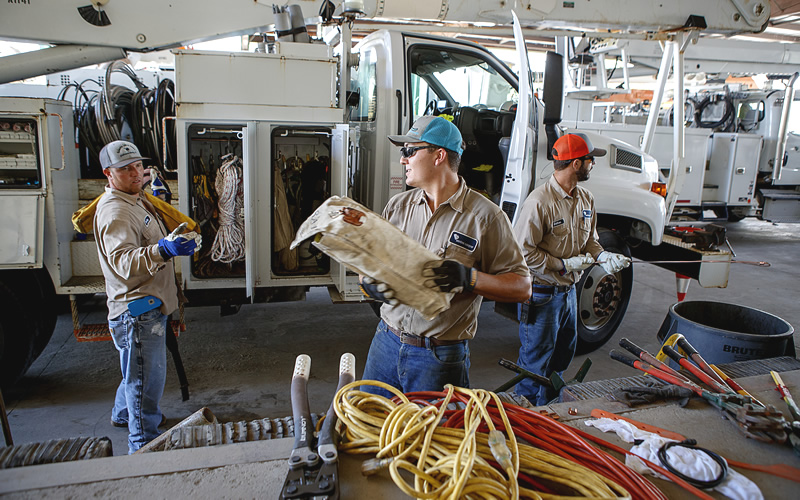
By Andy Brack, editor and publisher | Just as we are grateful for America’s men and women in the military, now is the time to thank the thousands of South Carolina’s public servants who make our state safer in this and other storms.
 Ahead of Hurricane Florence, the state activated more than 2,100 guardsmen. They joined 3,000 Department of Transportation workers and 1,200 state law enforcement officers. At the state Emergency Operations Center in Columbia, another 400 people manned telephones, barked orders and coordinated with colleagues from Little River to Seneca. Then came the thousands of police, firefighters, emergency medical technicians and others who united in the massive effort to help South Carolinians as Hurricane Florence threatened and smacked into the Palmetto State.
Ahead of Hurricane Florence, the state activated more than 2,100 guardsmen. They joined 3,000 Department of Transportation workers and 1,200 state law enforcement officers. At the state Emergency Operations Center in Columbia, another 400 people manned telephones, barked orders and coordinated with colleagues from Little River to Seneca. Then came the thousands of police, firefighters, emergency medical technicians and others who united in the massive effort to help South Carolinians as Hurricane Florence threatened and smacked into the Palmetto State.
It’s more than a job for these folks. It’s a calling to keep everyone safe.
Their public service is a gift to us all. All too often, we take for granted the sacrifices made by all government workers – from first responders and emergency personnel to teachers, librarians, elected officials, canine control officers and even the governor.
This storm, which has kept the state on tippy-toes for a week, reminds us to step back a little to recognize those who spend time away from their families during this time of crisis as well as day after day in their regular jobs.
Thank you for putting up with long hours, pay that is too low, sometimes grumpy members of the public and the government-haters who sour just about any interaction.
Thank you for teaching our children, protecting our homes and making our streets safer. Thank you for keeping the peace, ensuring things run on time, protecting our natural resources, crafting laws that generally make sense and trying to keep us healthy. Despite too-frequent complaints of too many regulations, too much red tape and too many delays, thank you for putting up with us without the appreciation you deserve.
If it were not for the dedicated men and women who keep the state ticking in good times and bad, imagine what life would be like. Instead of having a team of people who make our lives easier, we’d all have to be more self-sufficient. We’d have to take care of the educating, protecting, building and all sorts of other stuff every single day. Without government, there wouldn’t be time for much more beyond a subsistence lifestyle. And surely, there wouldn’t be time for the gadgets, games, phones, televisions and things that entertain us during leisure time. In fact, there wouldn’t be much of anything called leisure time because we’d mostly be just plain tired every evening after a full day of surviving.
So in the days ahead after Hurricane Florence is done thrashing like a fish on a dock, give a nod or a tip of the hat to that worker in the sanitation department or the policeman in line at a fast food joint. It will mean a lot.
Something else that’s pretty neat about any storm of this magnitude is how it ties you closer to your neighbors and community. People are nicer. Nastiness and politics go by the wayside.
Look at the great example in the gubernatorial campaign between incumbent GOP Gov. Henry McMaster and Democratic challenger James Smith. During Florence, it went on hold.
A pat on the back to McMaster and his team who spent hours at the state’s command center to provide frequent briefings to remind people to prepare for the worst and hope for the best.
And a big nod to Smith for leaving the campaign trail when he was called up for duty with the S.C. Army National Guard.
“I was in the room when he got word he was being called up,” Smith’s running mate, Rep. Mandy Powers Norrell, D-Lancaster, told us as the storm zoomed towards the coast. “He immediately arranged to get his hair cut and get in uniform to go and serve.
“He went from being a candidate for governor to being a soldier in a single moment because that’s what his state needed from him. James’ life is about service and he’s proud to do this.”
Most state and local government employees in the Palmetto State have the same zeal for public service. Let them know you know what they do.
- Have a comment? Send to: feedback@statehousereport.com.
SPOTLIGHT: Charter Communications
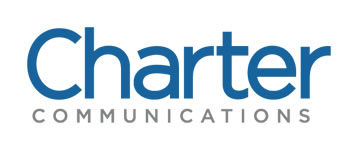 The public spiritedness of our underwriters allows us to bring Statehouse Report to you at no cost. Today, we’re happy to shine the spotlight on Charter Communications, the nation’s fastest-growing TV, internet and voice company. Committed to integrating the highest quality service with superior entertainment and communications products, Charter is at the intersection of technology and entertainment, facilitating essential communications that connect 24 million residential and business customers in 41 states, including South Carolina. In addition to being committed to giving back to the communities we serve, the bedrock of our business strategy is to serve our customers and exceed their expectations.
The public spiritedness of our underwriters allows us to bring Statehouse Report to you at no cost. Today, we’re happy to shine the spotlight on Charter Communications, the nation’s fastest-growing TV, internet and voice company. Committed to integrating the highest quality service with superior entertainment and communications products, Charter is at the intersection of technology and entertainment, facilitating essential communications that connect 24 million residential and business customers in 41 states, including South Carolina. In addition to being committed to giving back to the communities we serve, the bedrock of our business strategy is to serve our customers and exceed their expectations.
“We, at our core, are a service organization,” President and CEO Tom Rutledge says. “And every product we sell has a huge service component.”
- To learn more, visit Charter’s South Carolina services online here: https://buy.charter.com/services/south-carolina
FEEDBACK
FEEDBACK: Several readers respond to analysis on Southern strategy
To the editor:
![]() Excellent analysis and historical survey contextualizing today’s dangerous conditions and challenges of struggle both locally in South Carolina and nationally throughout the “body
Excellent analysis and historical survey contextualizing today’s dangerous conditions and challenges of struggle both locally in South Carolina and nationally throughout the “body
politic.”
This is a “must read and study” for the education and activism of ALL progressive
folks in South Carolina as well as in the country at large because a substantial part of the
United States of America is infected with this metastasizing cancer. An excellent contribution
to thoughtful, progressive and democratic work with “The Bill of Rights” and its Amendments
as basic to a substantive democracy in America.
— James E. Campbell, Charleston, S.C.
To the editor:
Excellent analysis plus it explains why southern whites vote against their own economic interests.
— George Wilson, Stone Mountain, Ga.
To the editor:
I hope this column will appear in the newspapers that rum the Statehouse Report.
— William Heitsman, Darlington, S.C.
To the editor:
Excellent. I wish they would run this in The State. Then it would be worth reading
— Judy Turnipseed, Columbia, S.C.
On a national campaign for more civics in schools
To the editor:
You have suggested a great idea on revving civic education for all students in the nation.
In fact, a group of civic education organizations, civic engagement groups, with a very few inspired philanthropies, are organizing to do just what you suggest.
Please check out http://www.civxnow.org/ for the details.
Thank you for adding your voice to the growing call to restore the essential and historic civic mission of our nation’s schools!
— Ted McConnell, Washington, D.C. [McConnell is executive director of the Campaign for the Civic Mission of Schools.]
Send us your thoughts. We love hearing from our readers and encourage you to share your opinions. But you’ve got to provide us with contact information so we can verify your letters. Letters to the editor are published weekly. We reserve the right to edit for length and clarity. Comments are limited to 250 words or less. Please include your name and contact information.
- Send your letters or comments to: feedback@statehousereport.com
MYSTERY PHOTO: What’s missing … and why?
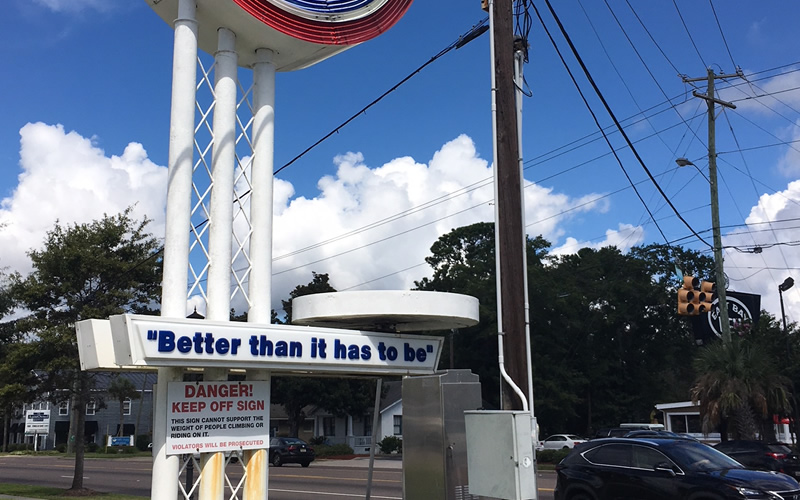
Something is missing from this location in this photo taken this week. What is it, and why? [We expect LOTS of correct guesses on this one. Come on … send in your guess to: feedback@statehousereport.com. And don’t forget to include your name and the town in which you live.}
Our previous Mystery Photo
 Our Sept. 7 mystery had lots of tiny clues – the football players in the stadium. As it happens, some sleuths guessed the teams – Wofford College and S.C. State University in a 2006 game – and not the stadium, which is what we expected folks to identify. No matter. We gave credit to all who came up with the teams or Gibbs Stadium, which is Wofford’s in Spartanburg.
Our Sept. 7 mystery had lots of tiny clues – the football players in the stadium. As it happens, some sleuths guessed the teams – Wofford College and S.C. State University in a 2006 game – and not the stadium, which is what we expected folks to identify. No matter. We gave credit to all who came up with the teams or Gibbs Stadium, which is Wofford’s in Spartanburg.
Hats off to George Graf of Palmyra, Va.; Gwen Strickland of Latta; Addison Ingle of Charleston; Don Clark of Hartsville; Barry Wingard of Florence; Sundra Proctor Smith of Little Africa, S.C.; and Greg W. Anderson of Edgefield.
Anderson noted: “It was built when Wofford joined Division 1 of the NCAA in the mid-1990s. Prior to this stadium, Wofford played in a very old stadium. Several years after this stadium was built, they added a huge scoreboard. It is a very nice stadium and promotes a family atmosphere with the many tailgating spots in and around the stadium. I think maximum capacity is around 10,000-15,000 if you include the general admission seating areas on the grass in the end zones. It is a source of pride for the Wofford alumni.”
Send us a mystery: If you have a photo that you believe will stump readers, send it along (but make sure to tell us what it is because it may stump us too!) Send to: feedback@statehousereport.com and mark it as a photo submission. Thanks.
S.C. ENCYCLOPEDIA
HISTORY: Hurricanes
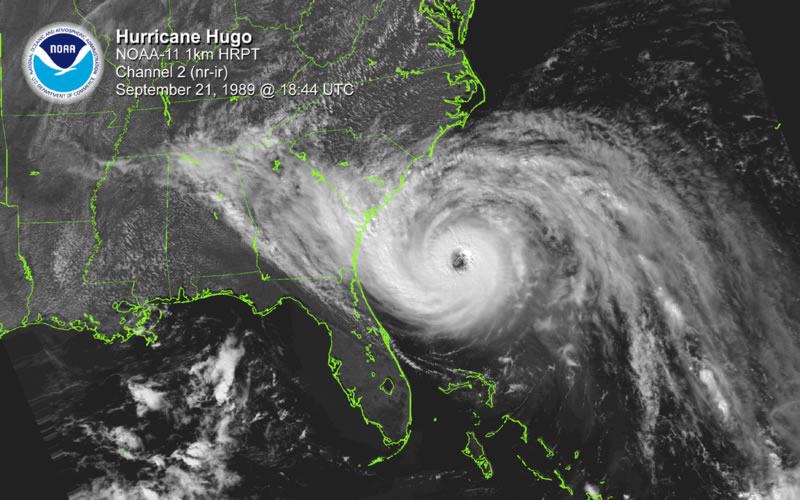
[Editor’s Note: This entry hasn’t been updated since the early 2000s, which is why it doesn’t include recent hurricanes.]
S.C. Encyclopedia | The term “hurricane” comes from the West Indian word “huracan,” which means “big wind” and is used to describe severe tropical cyclones in the Atlantic Ocean, Gulf of Mexico, Caribbean Sea, and the eastern Pacific Ocean. In the western Pacific, hurricanes are known as typhoons. The development of a hurricane requires an area of low pressure in a region of favorable atmospheric and oceanic conditions. Ocean temperatures must be near or greater than 80 ̊ F and wind speeds at mid- and upper-levels of the atmosphere must be light. At the center of the hurricane is the eye, a region of calm winds and subsiding air immediately surrounded by the most violent winds and precipitation called the eye wall. The counterclockwise rotation of cyclones in the Northern Hemisphere creates spiraling rainbands that span outward from the center. The outer rainbands of a hurricane, which can extend over an area three hundred to five hundred miles in width, contain the highest wind and heaviest precipitation away from the eyewall.
As the Northern Hemisphere summer approaches, more direct sunlight and longer daylight hours allow tropical oceans to warm sufficiently to support hurricane development. For that reason hurricane season runs from June 1 to November 30 each year in the Atlantic Ocean, Gulf of Mexico, and Caribbean Sea. During this time South Carolina is susceptible to land-falling tropical cyclones ranging in strength from tropical depressions (sustained winds less than 39 mph) to tropical storms (winds of 39 to 73 mph) and hurricanes (winds of 74 mph or higher).
Hurricanes are classified into five categories using the Saffir-Simpson scale based on maximum sustained winds, minimum central pressure, storm surge, and damage. Between 1900 and 2004, fifteen hurricanes hit South Carolina directly, making the average landfall once every seven years. Three of the fifteen hurricanes have reached major hurricane status of category 3, 4, or 5 on the Saffir-Simpson scale. The average for any tropical storm or hurricane landfall in South Carolina is once every four to five years. Storms that make landfall along the Gulf of Mexico, Georgia, and North Carolina coastline often impact South Carolina as well. The primary threats from hurricanes in South Carolina include storm surge, high winds, rainfall-induced flooding, and tornadoes.
The storm surge develops as high winds pile up water ahead of hurricanes and low pressure near the center causes the sea level to rise. On September 22, 1989, Hurricane Hugo made landfall near Sullivan’s Island with a storm surge of twenty feet in Bulls Bay. Storm surge reports of ten to fourteen feet were reported along the entire coastline from Folly Beach to Myrtle Beach. The maximum sustained winds just before landfall in Hugo were estimated at 140 mph. The damage from Hugo was catastrophic with an estimated $10 billion damage from the Caribbean to the U.S. mainland. In South Carolina hurricane force winds were reported inland as far north as York County. Shaw Air Force Base in Sumter experienced winds of 66 mph with gusts to 108 mph. Thousands of acres in the Francis Marion and Sumter National Forest were destroyed.
Thirty years earlier Hurricane Gracie hit Beaufort on September 29, 1959, with 125 mph winds and gusts to 150 mph. The storm surge associated with Gracie was less severe than with Hugo since the hurricane made landfall within an hour of low tide. Rainfall amounts with Gracie totaled three to eight inches in South Carolina and flooding of streams and rivers occurred well inland along the Appalachian Mountains. The main threat from Hurricane Gracie was the high winds and potential for tornadoes. Damage in South Carolina reached an estimated $14 million, with more than half the amount in Charleston County alone. The preliminary report from the Hurricane Warning Center in Miami (now the National Hurricane Center) described the damage as “the worst from a hurricane in the history of Beaufort, South Carolina.” Ten deaths were attributed to the storm in South Carolina, primarily due to downed trees and power lines and automobile accidents.
With a forward speed of more than 30 mph and winds more than 130 mph, Hurricane Hazel moved inland near Little River at the border between North and South Carolina on October 15, 1954. Wind gusts were observed to reach 106 mph at Myrtle Beach where more than 170 miles of piers and beachfront property from the Grand Strand northward to near Wilmington, North Carolina, were destroyed. A seventeen-foot storm surge was responsible for $61 million in beach damages, with another $100 million reported inland due to flooding and high winds. Twenty people drowned due to rainfall-induced flooding across the Carolinas as ten to twelve inches of rain fell in the mountainous terrain.
Perhaps the most remarkable storm in South Carolina’s hurricane history occurred prior to 1900. Termed the “Great Storm of 1893,” the late-August hurricane made landfall along the southern coast with little or no warning. A tremendous storm surge and high winds were responsible for more than two thousand deaths.
In 2004 South Carolina experienced one of the busiest tropical seasons on record with six storms affecting the state throughout the summer. Hurricane Charley became the first direct landfall from a hurricane in fifteen years as the storm made landfall near Cape Romain as a category 1 storm.
South Carolina had not experienced a direct hurricane landfall since Hurricane Hugo in September 1989. Less than a month later, Hurricane Gaston, also a category 1 storm, moved inland over the same area. For only the second time since 1900, two hurricanes made landfall in South Carolina during a single Atlantic Basin hurricane season. The last time was in 1959 when Hurricane Cindy preceded the ravaging effects of Hurricane Gracie.
Since Hugo in 1989, the coastal population of South Carolina has increased by nearly 150,000 citizens and the tourist population during the summer months has increased significantly. Storm surge remains the leading potential killer in tropical cyclones along the coast, while inland rain-induced flooding with tropical storms is the most underrated killer with the most observed casualties. In 1999 Hurricane Floyd made landfall in North Carolina but generated floods of one-hundred-year and five-hundred-year proportions in northeastern South Carolina along the Pee Dee, Waccamaw, and Lumber Rivers.
— Excerpted from an entry by S.C. State Climatology Office. This entry hasn’t been updated since 2006. To read more about this or 2,000 other entries about South Carolina, check out The South Carolina Encyclopedia, published in 2006 by USC Press. (Information used by permission.)
ABOUT STATEHOUSE REPORT
Statehouse Report, founded in 2001 as a weekly legislative forecast that informs readers about what is going to happen in South Carolina politics and policy, is provided to you at no charge every Friday.
- Editor and publisher: Andy Brack, 843.670.3996
- Statehouse correspondent: Lindsay Street
More
- Mailing address: Send inquiries by mail to: P.O. Box 22261, Charleston, SC 29407
- Subscriptions are free:Click to subscribe.
- We hope you’ll keep receiving the great news and information from Statehouse Report, but if you need to unsubscribe, go to the bottom of the weekly email issue and follow the instructions.
- © 2018, Statehouse Report. All rights reserved.
















 We Can Do Better, South Carolina!
We Can Do Better, South Carolina!